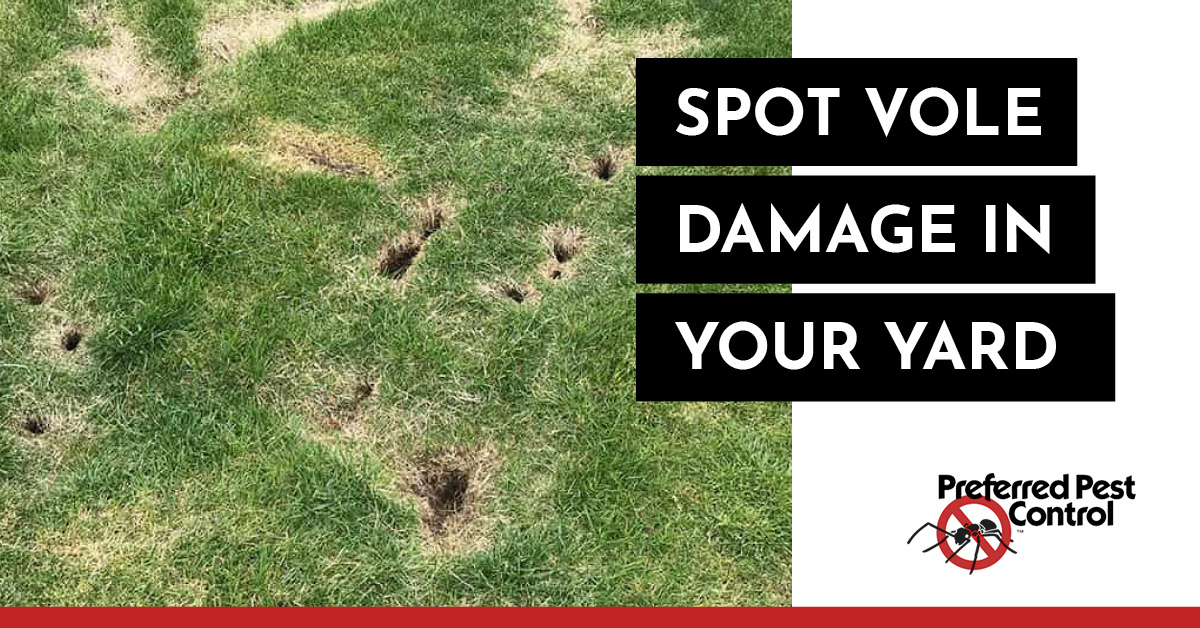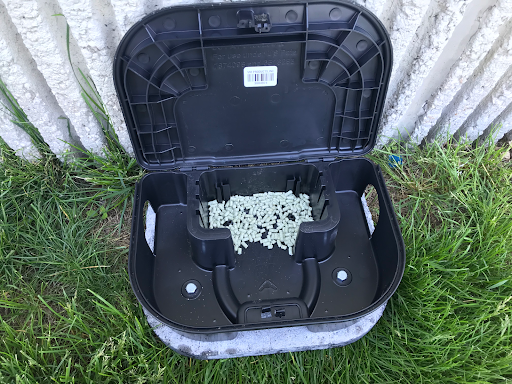
How to Get Rid of Voles and Avoid Vole Damage in Your Yard
October 19, 2022
Voles are a common pest but are not very well-known because of their similarities to moles and mice. Unfortunately, these unwelcome pests can wreak havoc on your yard. Identifying voles and the early signs of vole lawn damage can help you get ahead of the problem and prevent costly damage. Our vole control experts in Des Moines highlight the biggest differences in appearance and behaviors compared to mice and moles so Iowans can spot vole activity early!
What are voles?
Voles, also known as field or meadow mice, are smaller rodents with stocky bodies and furry tails. Voles occupy various habitats, like grasslike plants and heavily grassed areas. Although they prefer “natural” habitats, voles are also known to occupy areas modified by humans, such as cultivated fields, orchards and our lawns and gardens.
After a long winter, many of us are ready to return to our yards and gardens in preparation for the warmer weather. However, this is when voles are most common, and often homeowners will discover their unwelcome presence during an initial yard inspection once all the snow has melted away.
What’s the difference between a vole vs. a mouse?
Voles and mice have incredibly similar traits making them hard to decipher. Below are a few major distinctions to help you spot the difference between a vole vs. mouse:
- Mice have large eyes and ears for the size of their bodies. In comparison, Voles' features are smaller, especially their ears.
- A mouse's tail can extend nearly twice its body length, while a vole's tail is much shorter. This is why the long-tailed vole is most commonly mistaken for a mouse.
- Rodents are often identifiable by their snouts. Mice have a more pointed nose, and voles have a rounded snout.
How to Spot Vole Damage
Often, a homeowner will think they see harmless mice in their yard when they have voles notorious for wreaking havoc on lawns. If you spot the early signs of vole lawn damage, you can act quickly and get ahead of the problem. Vole damage can be quite obvious if you know what to look for, so our vole control experts share some of the most common signs of vole damage based on lawns, gardens and landscaping.
Vole Damage on the Lawn: If you notice multiple pathways throughout your lawn that have dead grass or plant debris, you probably have voles in your yard. Voles construct visible runways above or near the surface, along with tiny burrowing holes that lead to feeding areas. These runways form when voles eat the grass blades and then use the same path to get from one feeding spot to the next.
Vole Damage to Landscaping: Another clear sign of voles in the yard is unhealthy or leaning shrubs or trees. Voles burrow into the root systems of these larger plants and can cause major issues. Check for small gnaw marks along the bark and plants if you suspect voles are digging into your landscaping.
Vole Damage in the Garden: Gardeners can get very frustrated with the many pests that ruin their hard work, and voles are a common threat. These rodents will eat perennials, spring bulbs and root crops. A vole might be the culprit if you see partially eaten or missing bulbs, potatoes or carrots.
Vole Damage vs. Mole Damage
While there are a few clues to determine vole vs. mole damage, the biggest difference is how they form the tunnels or “pathways” throughout a property. Moles form these tunnels underground relatively close to the surface, so the ground can feel weak when walking over it. There should be hidden entry points to the tunnels marked by piles of soil left behind from digging. On the other hand, vole lawn damage includes obvious pathways above ground, leading from one hole to another. They are normally lined with grass, bark, and even fecal matter.
Prevention Tactics to Get Rid of Voles in Your Yard
Taking the right precautions and safety measures is important when removing voles from your lawn or garden. Like many outdoor pests, you can prevent voles from being attracted to your property by tidying up your yard, eliminating food sources or debris and choosing to landscape with rocks and gravel instead of wood and mulch. These steps to make your yard less appealing to outdoor critters will help ward them off.
If you notice vole damage, we recommend calling a professional to handle eradicating these pests. Many rodents can carry harmful diseases and can be difficult for homeowners to get rid of humanely. Instead of putting your kids or pets at risk by scattering the lawn with poison, repellant or mouse traps, hire a pest control technician to take care of the problem.

At Preferred Pest Control, our three-step process incorporates safety features to eliminate exposure to pets and children while effectively eradicating the voles living in your lawn.
Step 1. Install locked tamper-resistant bait boxes with bait specifically designed for vole control. The bait boxes are designed to keep out children, pets and wildlife.
Step 2. After two weeks, Preferred Pest will return to install additional bait in the stations.
Step 3. Preferred Pest will return one additional time to inspect for any remaining vole activity. If none are observed, the stations are removed, and the job is complete.
Contact Preferred Pest Control for Vole & Rodent Control in Des Moines
If you notice any vole damage to your lawn or want to learn more about our process for effective rodent control in Des Moines, contact the experts at Preferred Pest Control! We have specific pest control methods in place to get rid of voles and other pests safely and permanently. Call us at (515) 415-5550 or schedule an appointment online today.